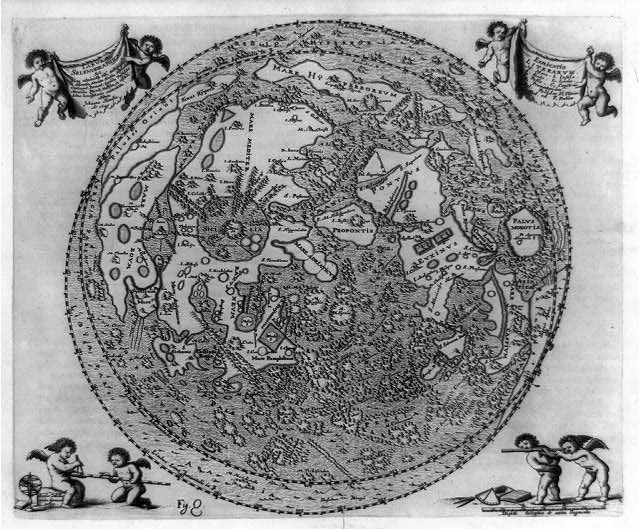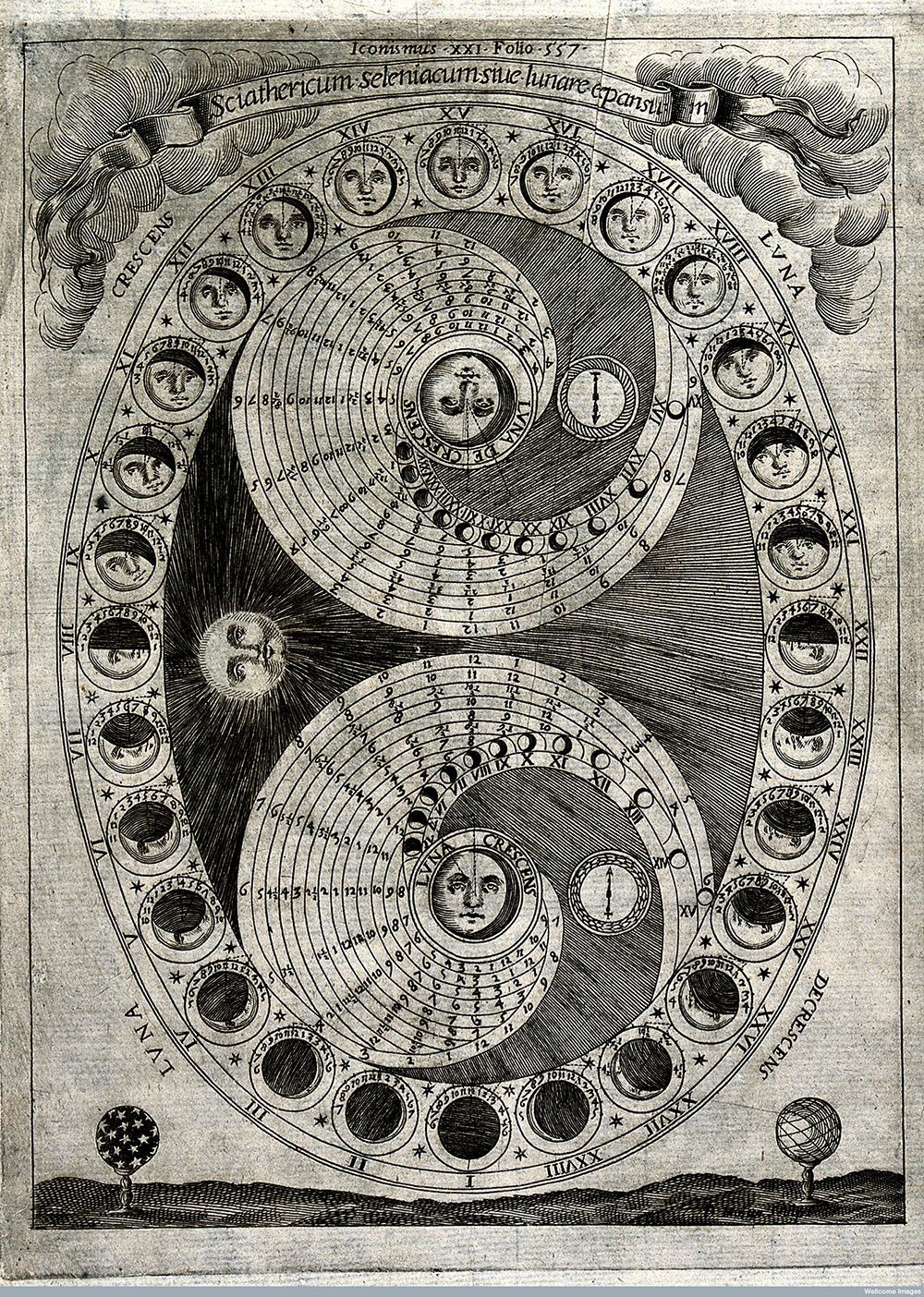The 17th-Century Moon Mission That Never Got Off the Ground
Dr. John Wilkins’ lunar ambitions were a little too lofty.

When Dr. John Wilkins looked out into the night sky in 1640, he was sure that in his lifetime humans could find a way to sail among the stars—and he knew how they would get there. Over three centuries before spaceflight became a reality, Wilkins had a plan laid out for space travel: voyagers would lift off of the ground in a winged, open chariot, break free from gravity as if opposing a magnet, and land delicately on the moon to meet the alien beings who lived there.
Wilkins had reason to believe that anything was possible in his time, even something that seems more like an episode of Star Trek than science. The 1600s was a century full of natural and technological discoveries; microscopes were beginning to reveal cells, Galileo studied the stars and planets using the newly improved telescope, and empirical evidence began to replace religious doctrine. Natural philosophers—the 17th-century version of scientists—began to question the world using hard evidence, and as an anatomist, theologian, mathematician, and experimenter, Wilkins was enamored with it all. But outer space, and the possibility that life—including earthlings—could exist there, was his intellectual passion.

Wilkins debuted his theories of how the moon and its possible present and future inhabitants could interact in his 1638 book Discovery of a New World; or, A Discourse tending to Prove that ‘tis probable there may be another habitable World in the Moon. Science historian Dr. Allen Chapman wrote that he might have been trying to gain funding to test his ideas from this literature, which reads a little bit like a proposal to investors. In his writings, Wilkins describes an open, wheeled chariot with a vertical rotating sail sprouting from the backrest. If this chariot could lift a few men, they could pop on over to the Moon, where they would glide to a land on the same wheels that gave them their running, earthly start.
Wilkins’ ideas were both optimistic and plausible, given the knowledge of space, gravity and biology that was available to him at the time—though he excitedly embraced various hypotheses with what can look to modern eyes like reckless abandon. When addressing the potential problem of how his space explorers would eat, Wilkins posited that since the travelers would be free from the constraints of gravity “we shall not at all spend ourselves in any labour and consequently not much need the Reparation of Diet: But may perhaps live altogether without it.” He used accounts of a German who accidentally slept through the winter, and ancient Indian and Greek individuals hibernating like bears, to support his argument. “If none of these ideas convince you,” he admitted, “there may haply be some possible Means for the Conveyance of other food.”

Sleep would likewise not be a problem for Wilkins; but contemporary theories about air thinness with greater heights gave him enough pause to suggest that a moist sponge be included on the flying chariot to provide comfort. At the time theories of gravity were in their infancy, and prior to Newton’s discoveries in 1687, some people believed gravity was a uniform pull similar to a magnet rather than an interaction between two objects and some theorists, including Wilkins believed this pull could be resisted if high enough in the air. Wilkins reminded his critics that birds fly, as do angels in pictures—and he referenced the mechanics of bird’s wings and kites, which were actually used to begin air travel research three centuries later. “I do seriously and upon good grounds affirm it possible to make a Flying Chariot; in which a man may sit and give such a Motion unto it as shall convey him through the air,” Wilkins wrote. As a theologian, Wilkins also had an invested interest in other worlds having inhabitants, under the logic that a Creator would never invent a world, even the moon, without someone to live on it.
Wilkins was not alone in mixing empirical evidence with conjecture in the 1680s; maps of the moon referred to craters as oceans, which exist in name as moon features today, and he likely drew from others’ works and theories regarding extraterrestrials, which some of his contemporaries called Selenites. He regularly proposed new possibilities to the science world, including a universal language, and a cypher and signal system allowing anyone to “with privacy and speed communicate his thoughts to a friend at any Distance.” Through his math and science writings and by coining the word “cell” in biology, he gained esteem from other natural philosophers, with whom he founded the Royal Society of science in England. He had the credibility and the time to spend on flying chariots. He just needed to test his hypotheses.

Some of these extraterrestrial endeavors reportedly made their way to the experimentation phase, at his outdoor inventor’s garden of intriguing doo-dads at Wadham College at Oxford, where he was the school’s Warden. According to Chapman, Wadham’s gardens held a “collection of mechanical contrivances, including a talking statue, a rainbow-maker, and glass beehives used to study the bee colony.” Robert Hooke, a fellow natural philosopher, wrote of experimenting with flying machines in the garden with Wilkins. Unfortunately, neither Hooke nor Wilkins recorded details of their efforts, possibly because the experiments were unsuccessful. Soon after the attempt, Hooke began working on improving clocks.
This is probably for the best. Wilkins’ plans hinged on the faulty idea that Earth’s atmosphere is nearly identical to the conditions of space, and the reality would have come as a shock to the 17th-century astronaut. Wilkins didn’t entirely give up on his dream until Robert Boyle and Robert Hooke’s experiments revealed that the space was actually a vacuum, in which no human could survive. Magnetism and gravity were, he also found out, very different. A century later, some of Wilkins’ eclectic passions were the butt of small jokes; in a 1784 letter, historian Horace Walpole wrote: “I discovered an alliance between Bishop Wilkins’s art of flying, and his plan of universal language; the latter of which he no doubt calculated to prevent the want of an interpreter when he should arrive at the moon.”
For all his errors, Wilkins advanced research in astronomy and science, and some of his extravagant ideas—spaceflight and long distance communication—came to fruition, even if centuries later than he anticipated. In Wilkins’ own words, even the inventions of ships seemed impossible to the people who first conceived them, and “none but the bold, daring men durst venture … We have no just reason to be discouraged in our hopes of the like success.” Wilkins’ grand hypotheses might even be proved in full, if we start using a universal language and meeting aliens. Only time will tell.



















Follow us on Twitter to get the latest on the world's hidden wonders.
Like us on Facebook to get the latest on the world's hidden wonders.
Follow us on Twitter Like us on Facebook